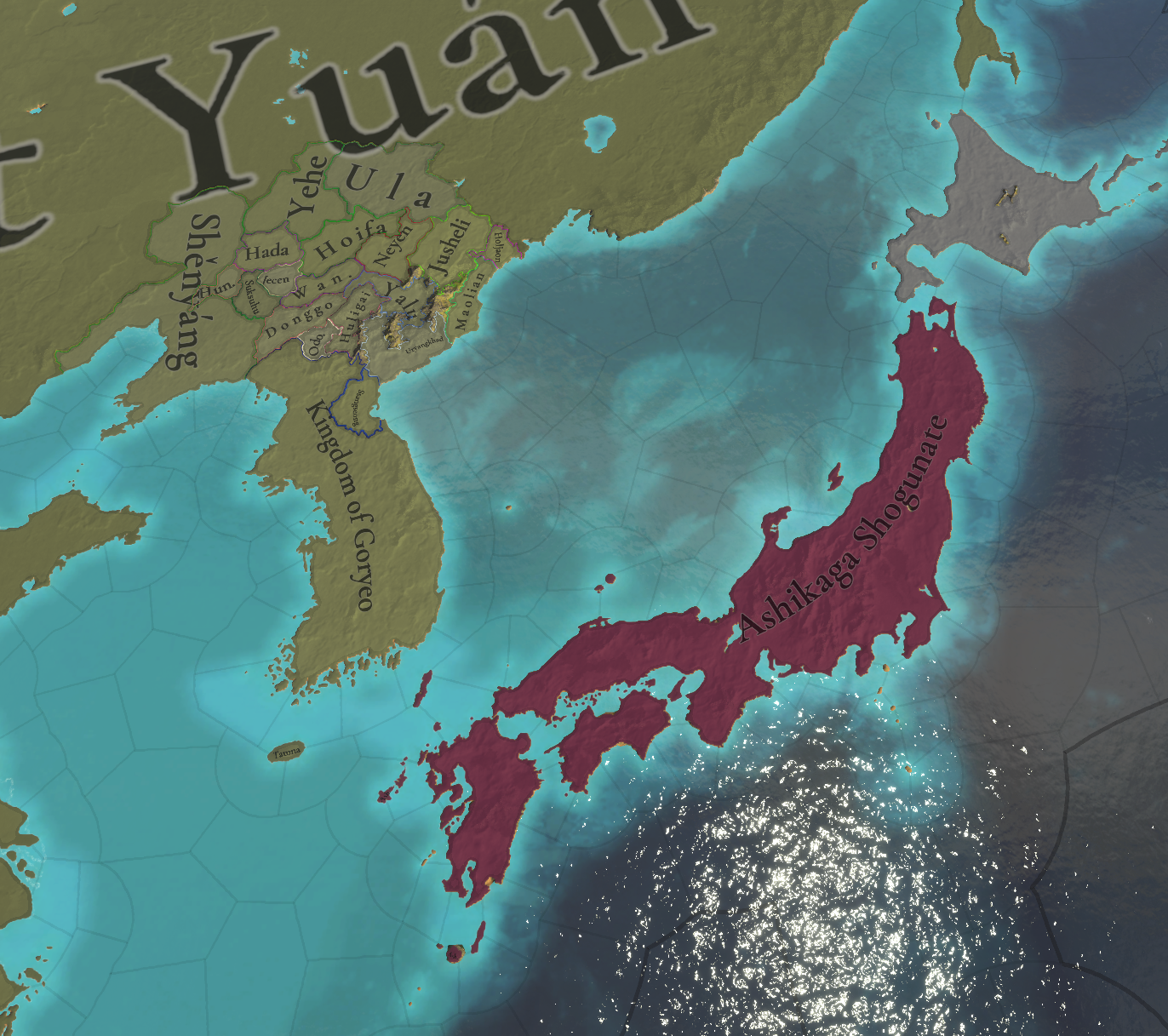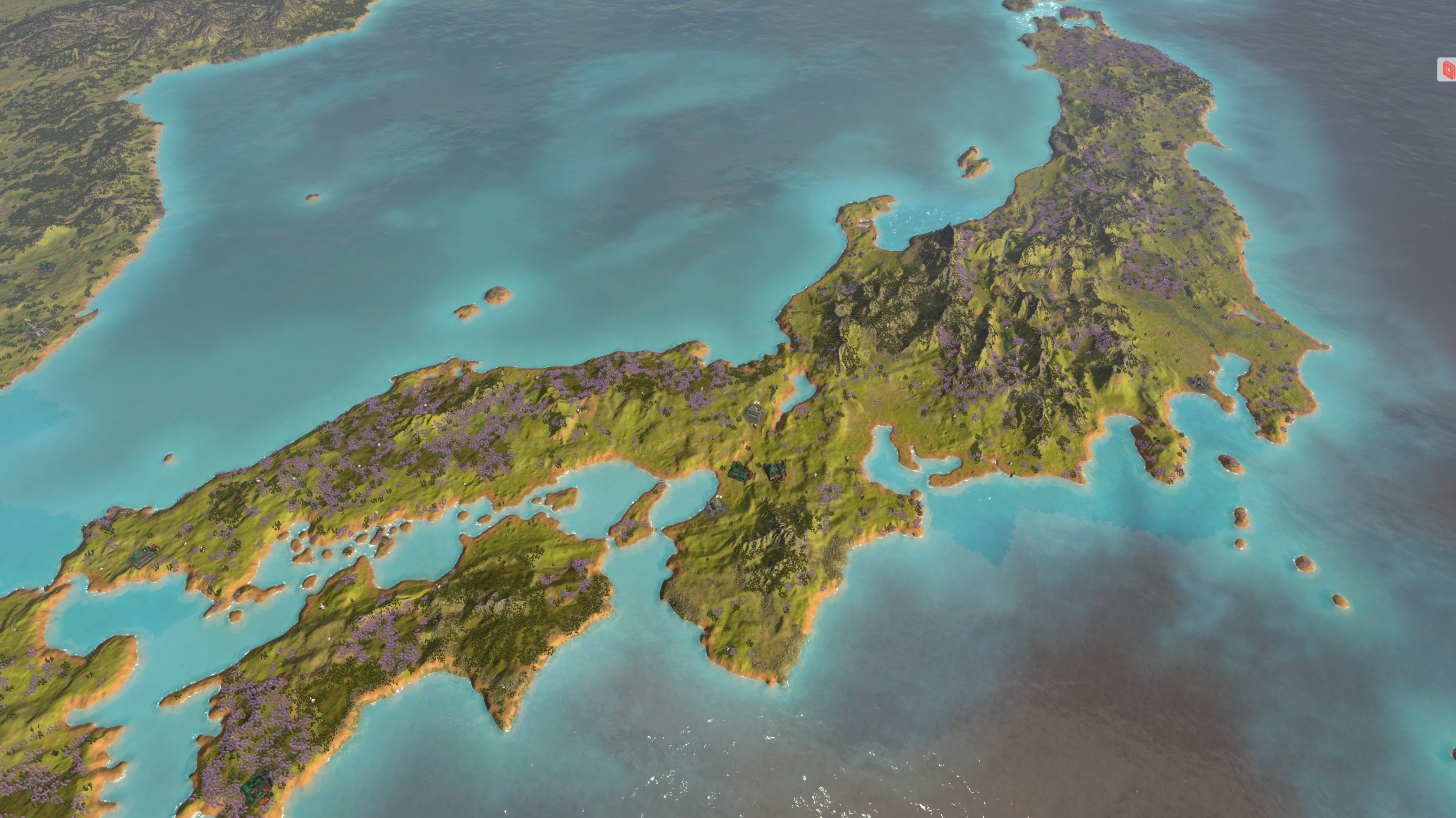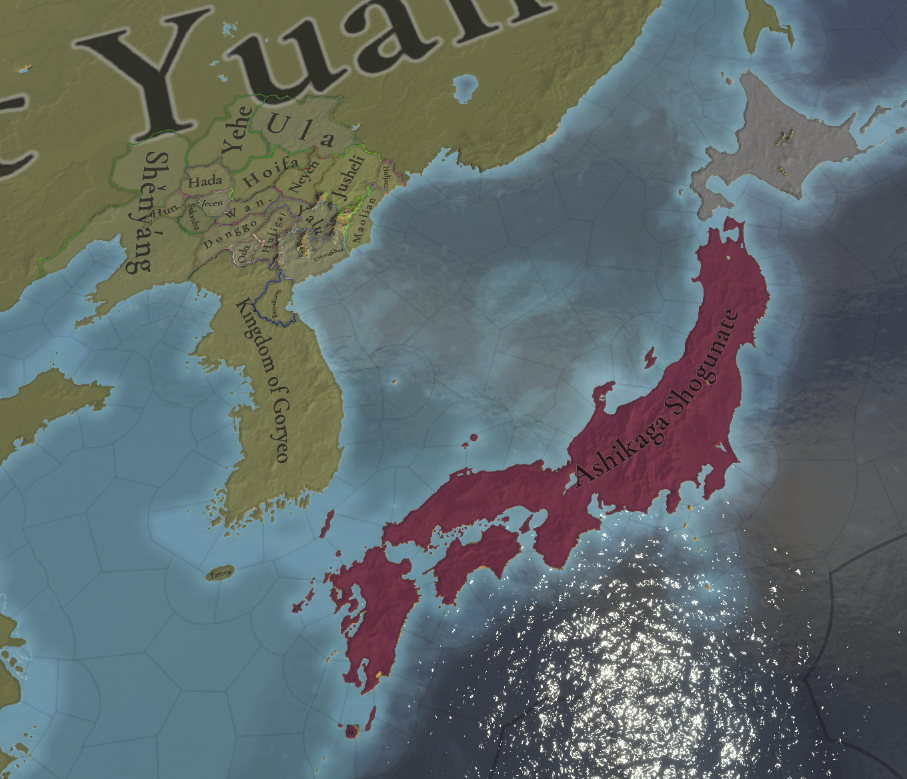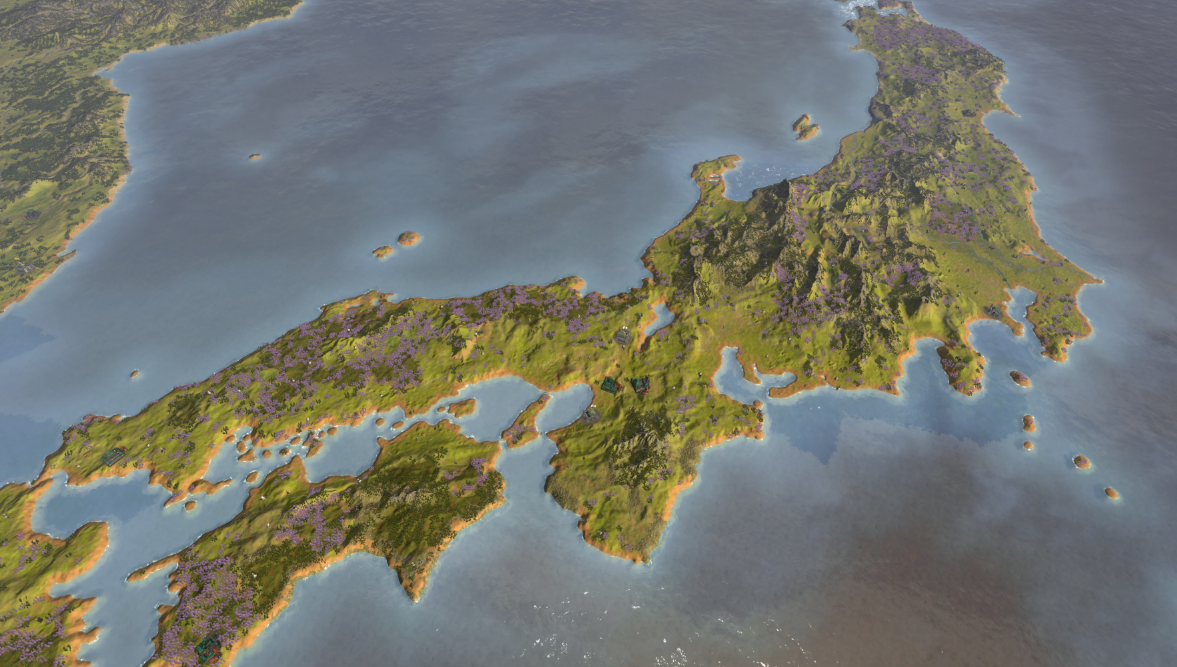Hello and welcome once more to another edition of Tinto Flavour. Today we will continue the Japanese theme by taking a look at the flavor of Japan and the Japanese clans, as well as the situations of the Nanbokuchō and Sengoku Jidai.

These are the estates of Japan:
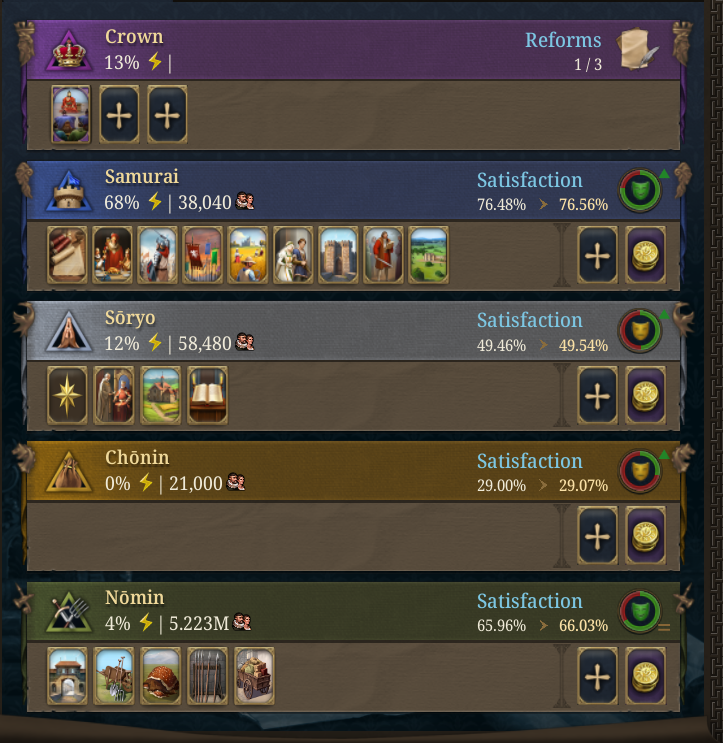
And it has this unique reform:
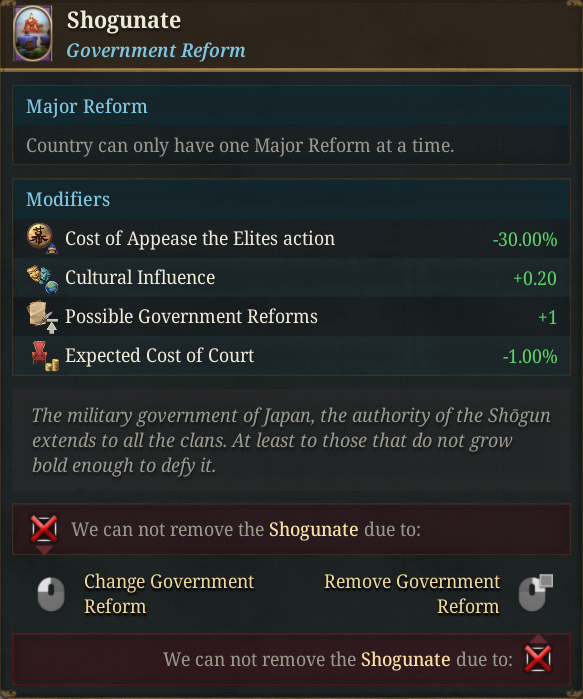
While the other clans and the imperial courts have these other ones:
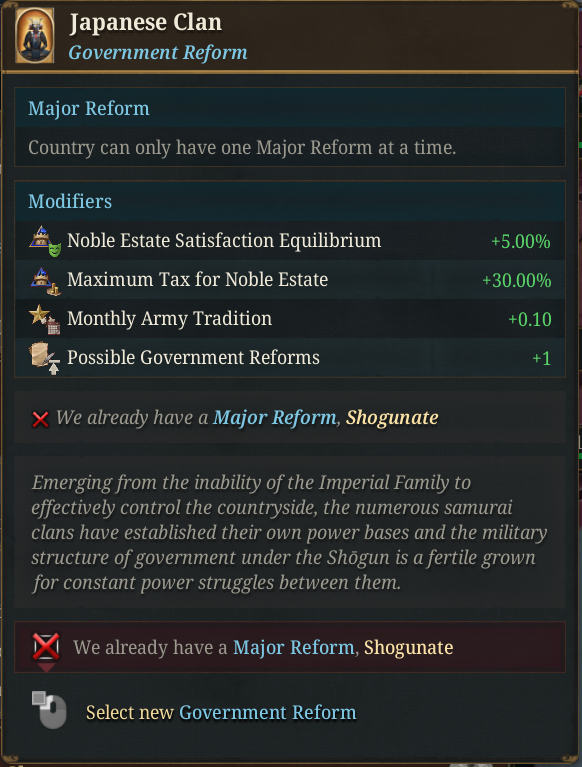
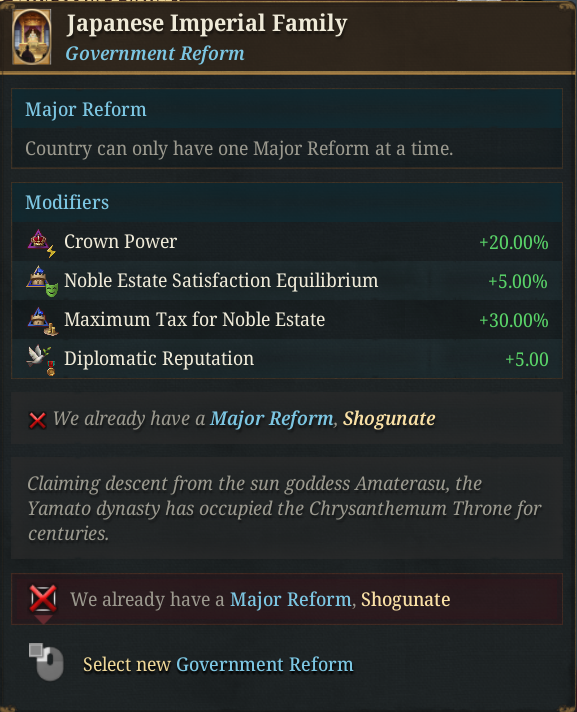
Japanese countries have some common advances, and some of the individual clans have also some unique ones. Some examples:

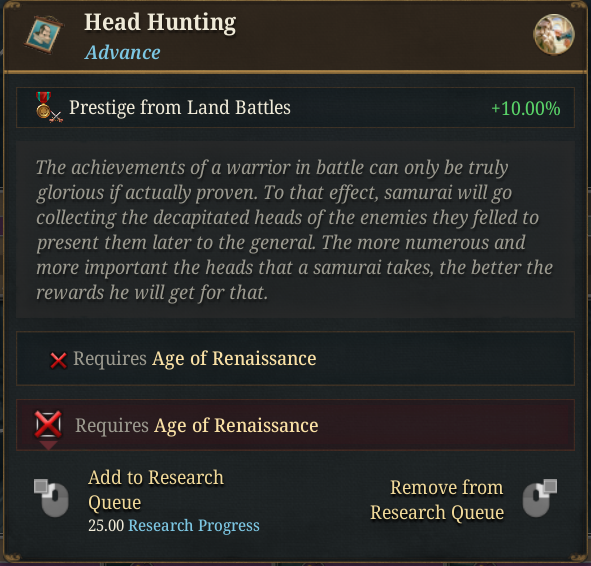
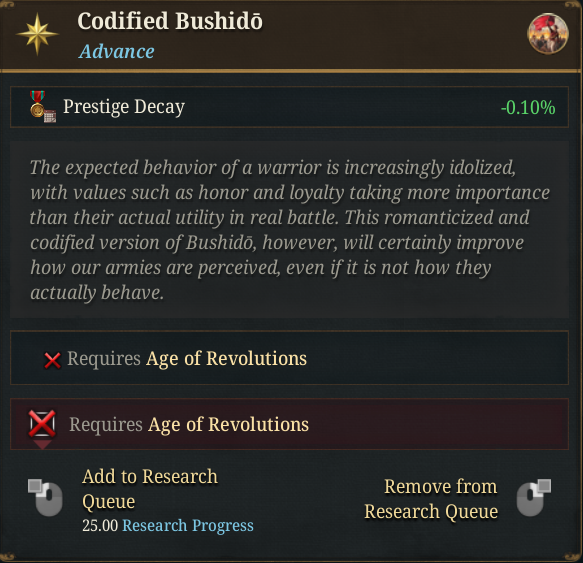
Some unique ones (try to guess which clan they are for):
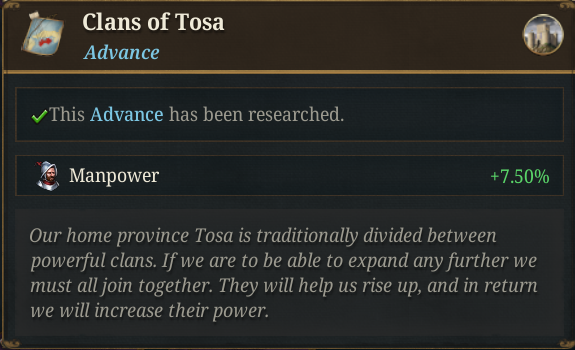
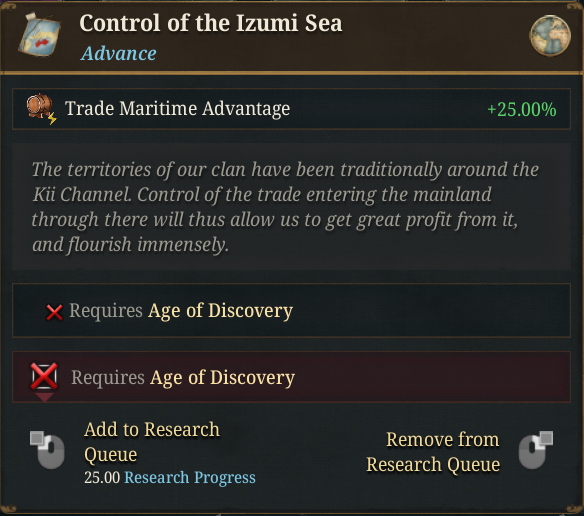
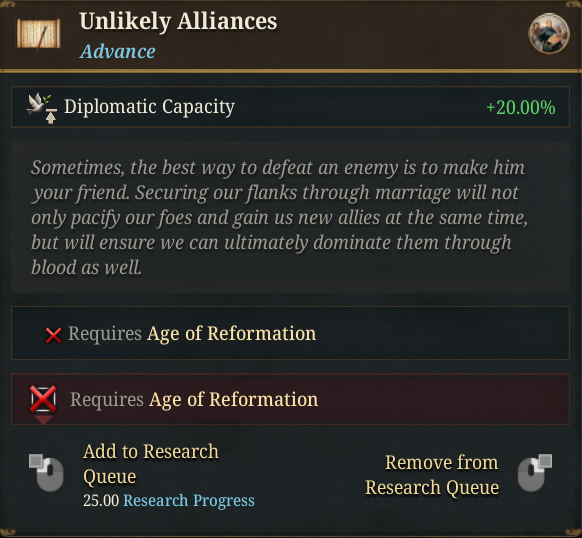
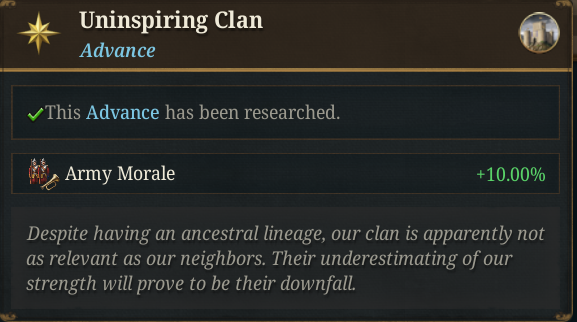

Let’s talk now about how the clans behave. Let me start by saying that our recommended country to play in Japan generally is the country of Japan itself, as the clans, being building-based countries, play quite a bit different than regular tags, and thus are rather suited to experienced players that want to try a different and more challenging game style.
That being said, let’s look at how they work. Being building-based countries, they are of course dependent on their buildings. Here is some of them:


The next ones are exclusive for the imperial court countries and the non-imperial clans, respectively:


And another important building that cannot be built manually but it will instead be built automatically when a clan is assigned to be Shugo of a province (see yesterday’s Tinto Talks for that mechanic):

As you can see, both their economy and their troops will depend directly on the buildings that they own, so their strategy is to expand their presence by building more of those buildings and also taking the ones owned by other clans in war.
Now that we mention war, it’s time to talk about the two civil war situations in the game. Let’s start with the Nanbokuchō Jidai, a situation that starts just at the beginning of the game. Initially, all countries all assigned to support either the northern or the southern court, according to their historical alliances, but when the situation starts, countries will get the following event:
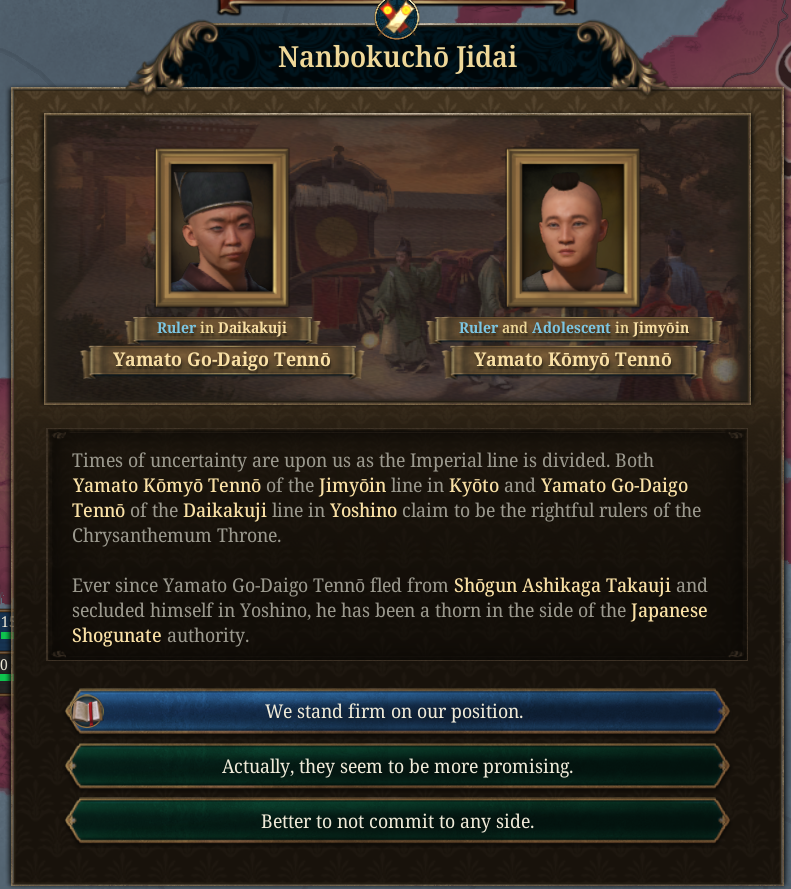
With this, the clans will be able to choose to switch loyalties, or even declare neutrality, although for obvious reasons neither the two courts nor the shogunate are able to change their allegiances. The whole country will thus be divided into sides:
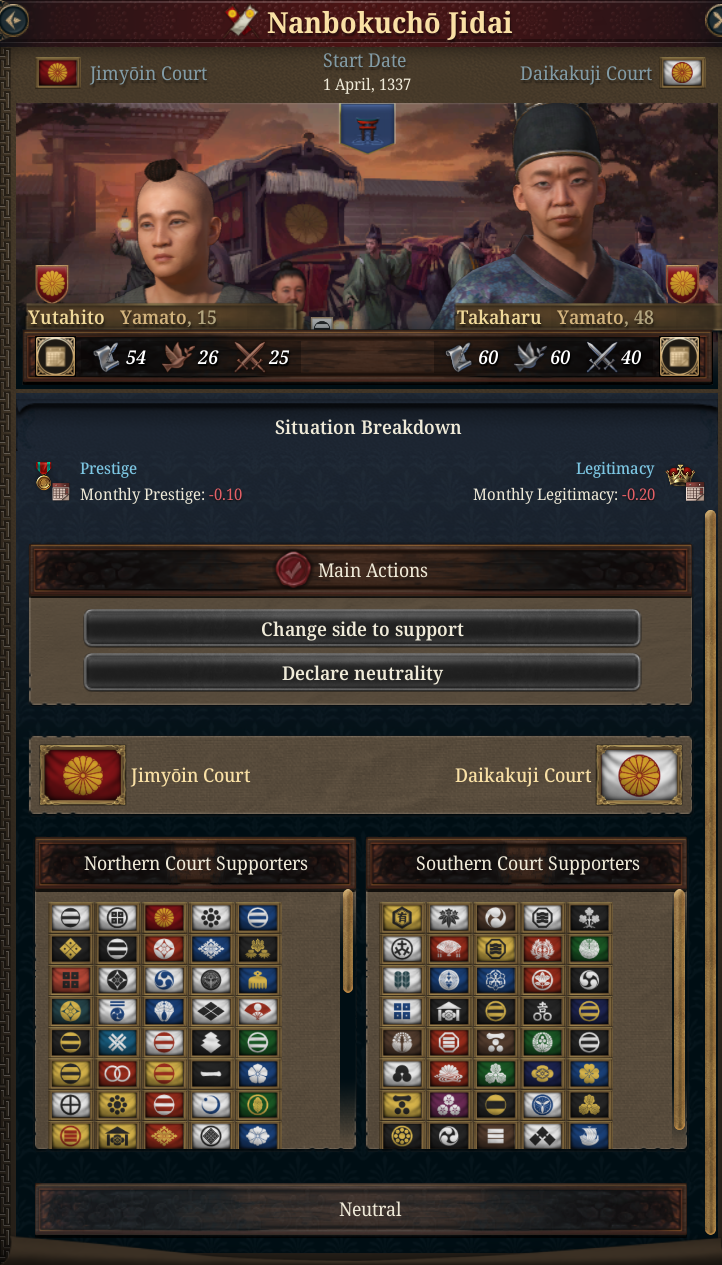
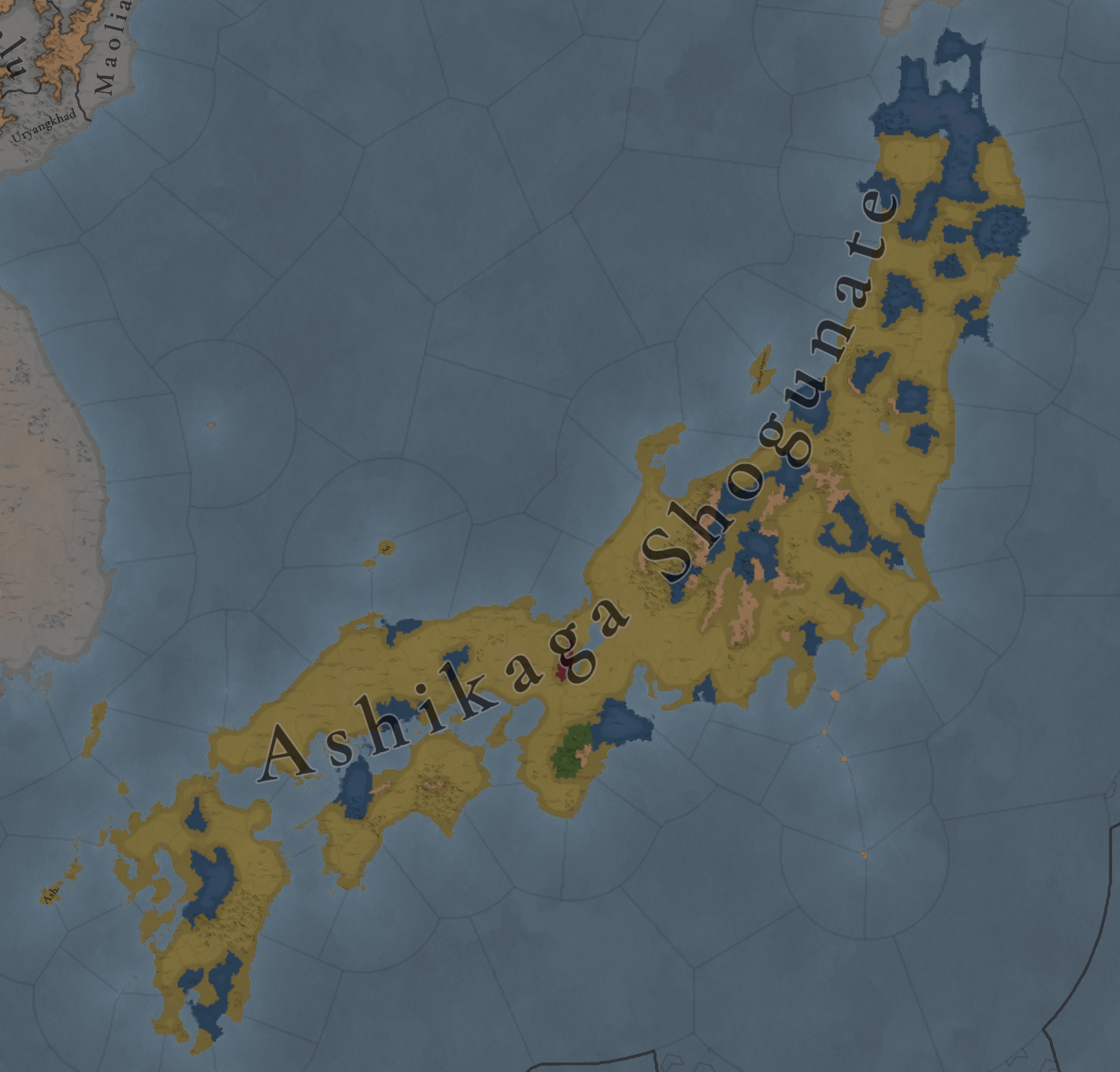
Even after the situation has started, countries can choose to change their loyalty, not only via the actions in the situation panel but also through events that will fire during the situation allowing for that. Besides that, there will also be other events firing with options of getting casus belli or even declaring wars, making it so that chaos is ensured.
One important thing to note is that as long as the Nanbokuchō Jidai situation is active, countries will not be able to declare war on others supporting the same side as them. If you want to attack another clan that is supporting the same side as you, you will have to do it after the situation is resolved (or choose to change your loyalty, of course).
To end the situation, one of the two courts must be forced to disappear, through a special peace treaty “Force Imperial Abdication”.
So, we just had a civil war, what about a second one? Whether the Nanbokuchō Jidai situation resolves successfully or not, an even bigger civil war will still be looming. The Sengoku Jidai situation can happen after 1400 if there is no Shōgun, or if the Shōgun is in a weak position (low legitimacy or stability, or with rebellion problems), or if there are more than 6 wars currently active among the clans. As such, a strong shogunate will be able to avoid falling into it if they manage to keep their children in check.
Once it starts, the stronger and bigger clans will automatically transform into landed Daimyō, with the rest receiving an event with the option to also become landed, at the cost of opinion with the shogunate.
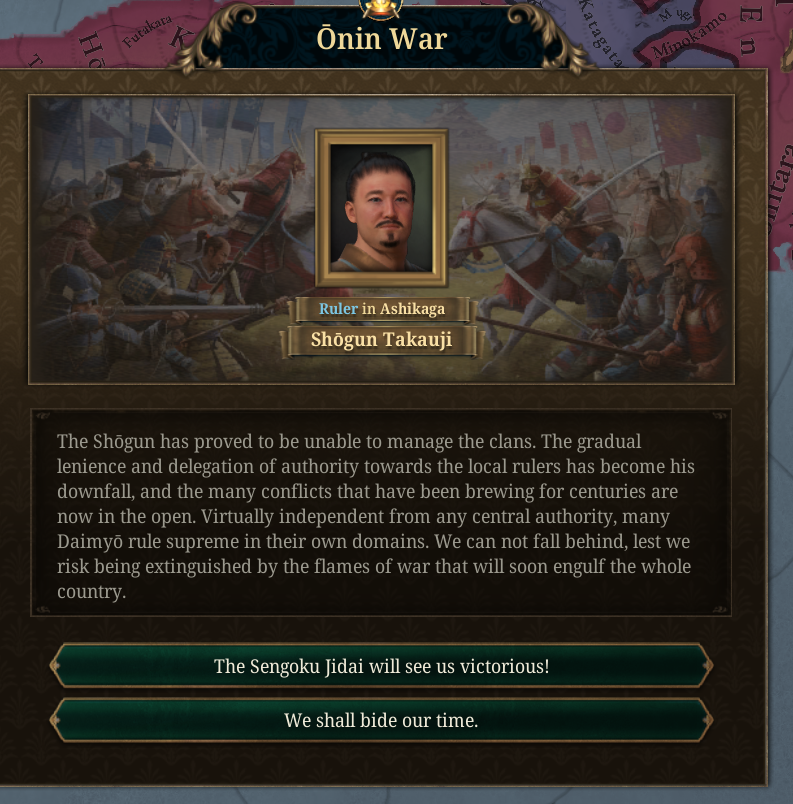
Becoming landed will have many consequences. For once, all locations in the shogunate in which they have a presence with their buildings will become owned by them, and they will receive a new government reform replacing the “Japanese Clan” one:
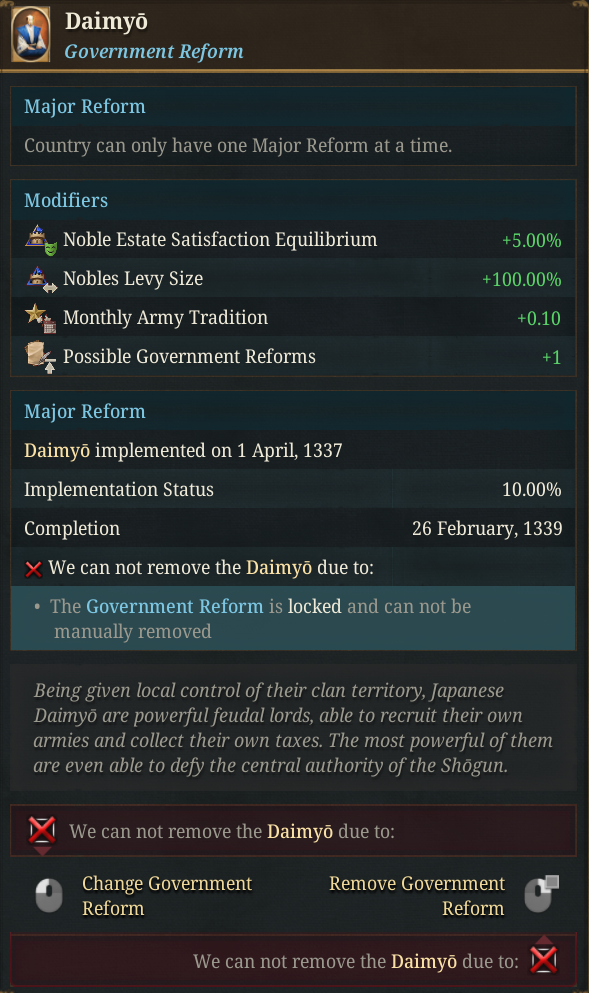
Even if a country does not choose to become landed with this event, they may have the option to do so in the future, both via further events that can fire during the situation, and also directly through the action “Proclaim Independence” in the situation panel:
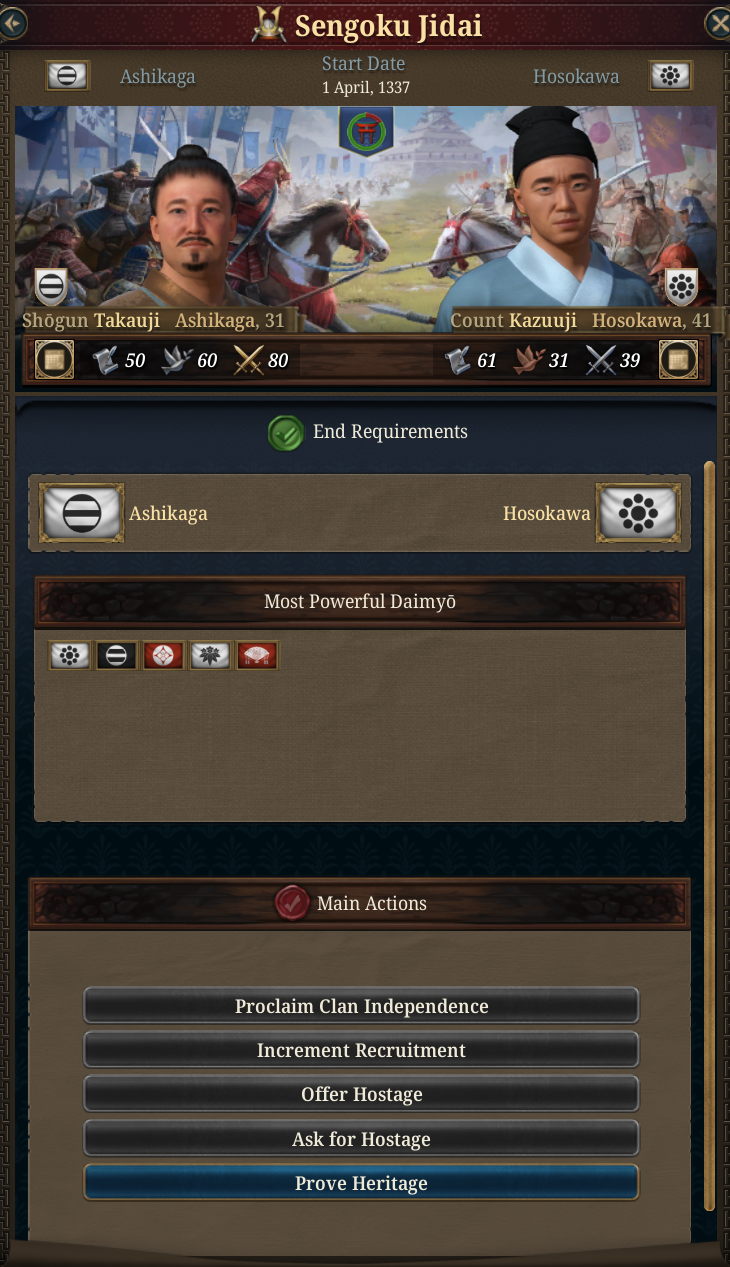
The actions available in the panel are slightly different for the Shōgun, giving extra tools to control the many clans, both the ones that have been already landed and those that are still as building-based countries:
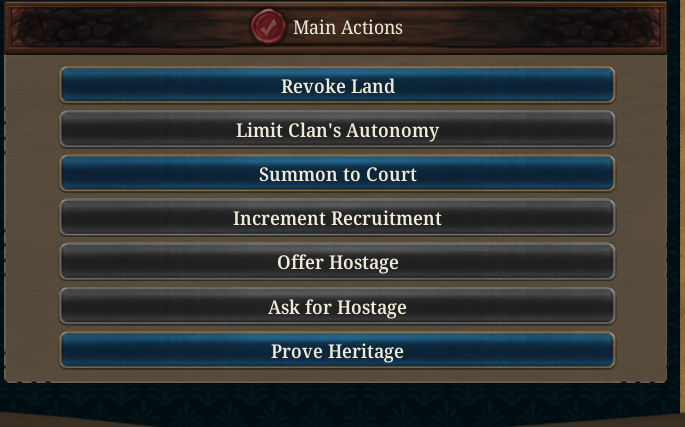
The objective of the Shōgun will thus be to curb the autonomy of the clans, while the objective of any clan would be to gain sufficient power to either become the Shōgun themselves or to destroy the shogunate entirely. The situation will end when there is only a single country in the shogunate (with the exception of allowing for the presence of a building-based emperor), or when the Shōgun has managed to reduce all other clans to just a single location building-based country.
As with the Nanbokuchō Jidai, there will be some events firing during the situation, giving the countries options to gain casus belli, declare wars, etc, and there are also some event chains of interaction between the Shōgun and the clans when the former uses the action to “Summon to Court”.
And that is all for today. With almost 150 countries in the Shogunate, there is much more to unpack in the game, but this is as far as we can show here.
As an extra treat, because many of you asked about it, here's an updated view of the terrain map for Japan, with an especial effect of cherry blossoms during spring:
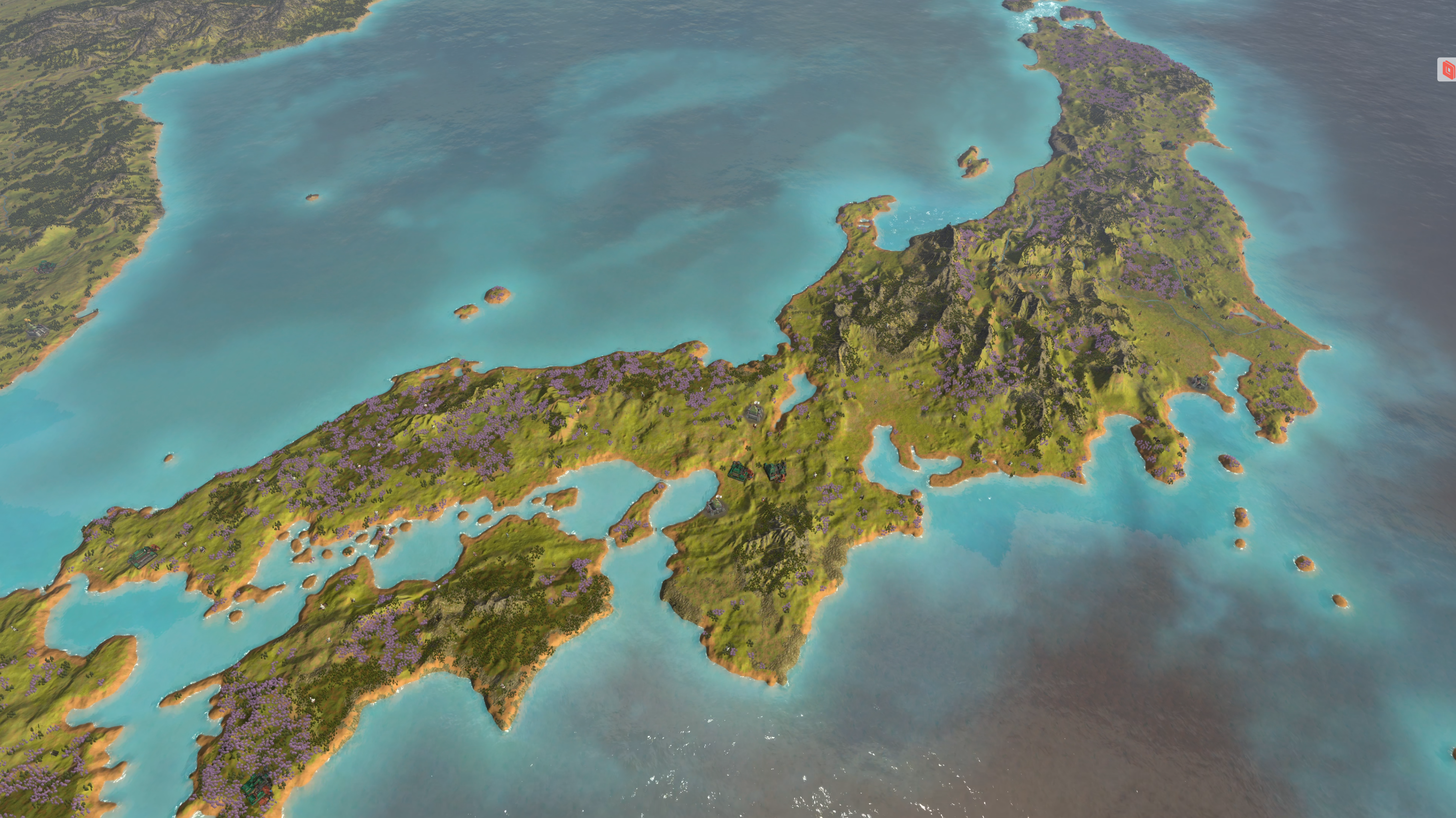
Next week @Pavía will be back, so I'll leave you in his care (I still don't know what will be the schedule for next week, sorry).
And remember to Wishlist Europa Universalis V now!








Some unique ones (try to guess which clan they are for):





That being said, let’s look at how they work. Being building-based countries, they are of course dependent on their buildings. Here is some of them:


The next ones are exclusive for the imperial court countries and the non-imperial clans, respectively:



Now that we mention war, it’s time to talk about the two civil war situations in the game. Let’s start with the Nanbokuchō Jidai, a situation that starts just at the beginning of the game. Initially, all countries all assigned to support either the northern or the southern court, according to their historical alliances, but when the situation starts, countries will get the following event:



One important thing to note is that as long as the Nanbokuchō Jidai situation is active, countries will not be able to declare war on others supporting the same side as them. If you want to attack another clan that is supporting the same side as you, you will have to do it after the situation is resolved (or choose to change your loyalty, of course).
To end the situation, one of the two courts must be forced to disappear, through a special peace treaty “Force Imperial Abdication”.
So, we just had a civil war, what about a second one? Whether the Nanbokuchō Jidai situation resolves successfully or not, an even bigger civil war will still be looming. The Sengoku Jidai situation can happen after 1400 if there is no Shōgun, or if the Shōgun is in a weak position (low legitimacy or stability, or with rebellion problems), or if there are more than 6 wars currently active among the clans. As such, a strong shogunate will be able to avoid falling into it if they manage to keep their children in check.
Once it starts, the stronger and bigger clans will automatically transform into landed Daimyō, with the rest receiving an event with the option to also become landed, at the cost of opinion with the shogunate.




The objective of the Shōgun will thus be to curb the autonomy of the clans, while the objective of any clan would be to gain sufficient power to either become the Shōgun themselves or to destroy the shogunate entirely. The situation will end when there is only a single country in the shogunate (with the exception of allowing for the presence of a building-based emperor), or when the Shōgun has managed to reduce all other clans to just a single location building-based country.
As with the Nanbokuchō Jidai, there will be some events firing during the situation, giving the countries options to gain casus belli, declare wars, etc, and there are also some event chains of interaction between the Shōgun and the clans when the former uses the action to “Summon to Court”.
And that is all for today. With almost 150 countries in the Shogunate, there is much more to unpack in the game, but this is as far as we can show here.
As an extra treat, because many of you asked about it, here's an updated view of the terrain map for Japan, with an especial effect of cherry blossoms during spring:

Next week @Pavía will be back, so I'll leave you in his care (I still don't know what will be the schedule for next week, sorry).
And remember to Wishlist Europa Universalis V now!



